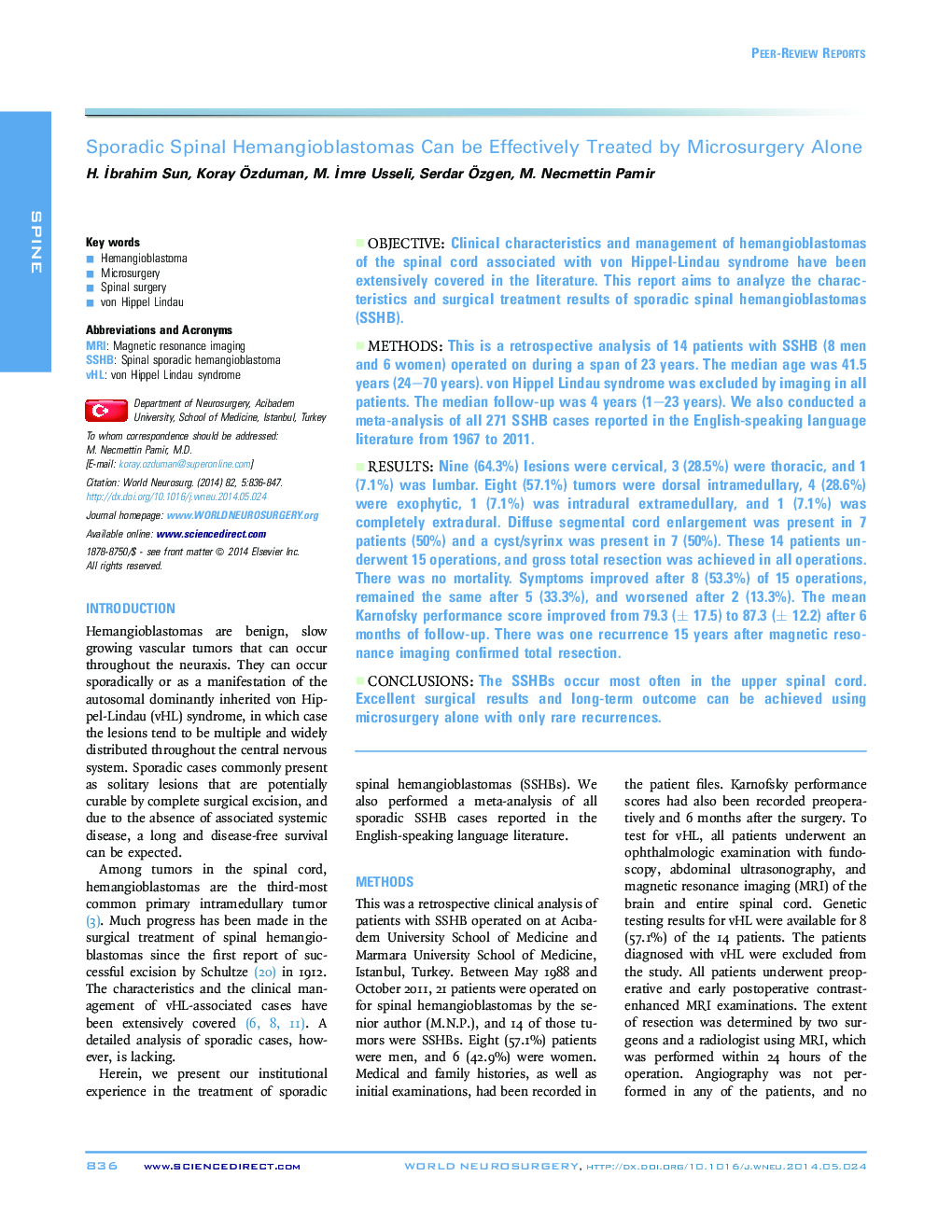| Article ID | Journal | Published Year | Pages | File Type |
|---|---|---|---|---|
| 3095334 | World Neurosurgery | 2014 | 12 Pages |
ObjectiveClinical characteristics and management of hemangioblastomas of the spinal cord associated with von Hippel-Lindau syndrome have been extensively covered in the literature. This report aims to analyze the characteristics and surgical treatment results of sporadic spinal hemangioblastomas (SSHB).MethodsThis is a retrospective analysis of 14 patients with SSHB (8 men and 6 women) operated on during a span of 23 years. The median age was 41.5 years (24–70 years). von Hippel Lindau syndrome was excluded by imaging in all patients. The median follow-up was 4 years (1–23 years). We also conducted a meta-analysis of all 271 SSHB cases reported in the English-speaking language literature from 1967 to 2011.ResultsNine (64.3%) lesions were cervical, 3 (28.5%) were thoracic, and 1 (7.1%) was lumbar. Eight (57.1%) tumors were dorsal intramedullary, 4 (28.6%) were exophytic, 1 (7.1%) was intradural extramedullary, and 1 (7.1%) was completely extradural. Diffuse segmental cord enlargement was present in 7 patients (50%) and a cyst/syrinx was present in 7 (50%). These 14 patients underwent 15 operations, and gross total resection was achieved in all operations. There was no mortality. Symptoms improved after 8 (53.3%) of 15 operations, remained the same after 5 (33.3%), and worsened after 2 (13.3%). The mean Karnofsky performance score improved from 79.3 (± 17.5) to 87.3 (± 12.2) after 6 months of follow-up. There was one recurrence 15 years after magnetic resonance imaging confirmed total resection.ConclusionsThe SSHBs occur most often in the upper spinal cord. Excellent surgical results and long-term outcome can be achieved using microsurgery alone with only rare recurrences.
